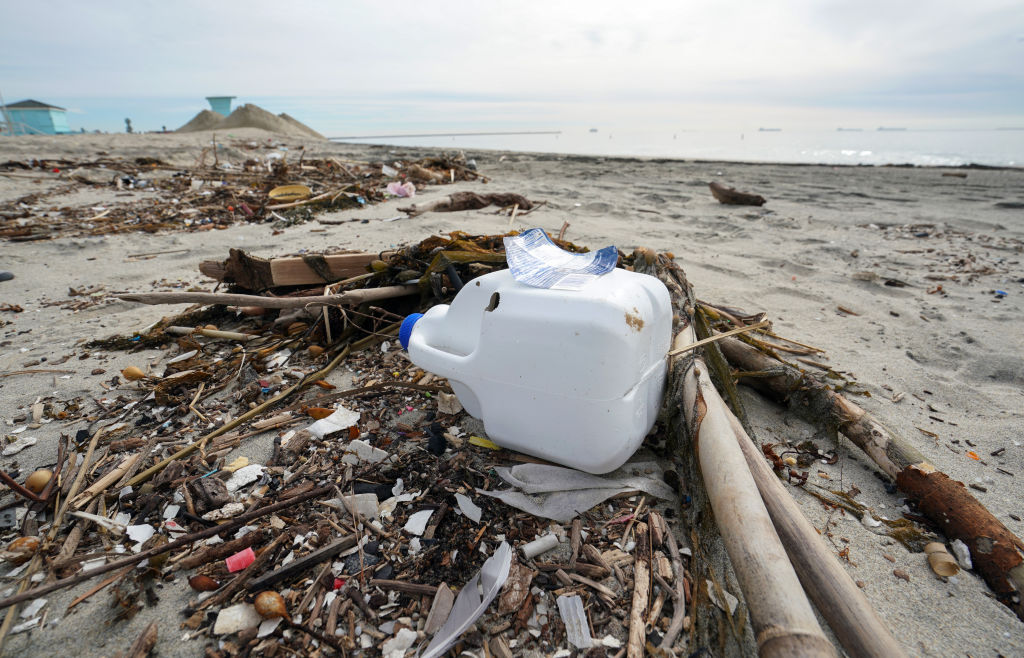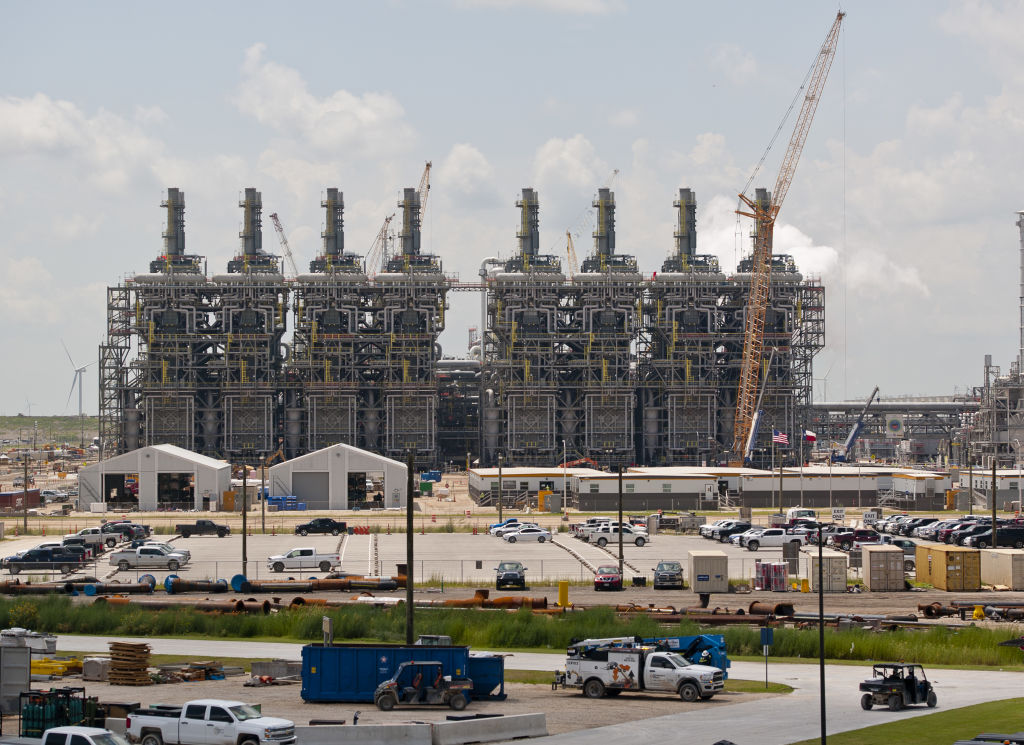
A few weeks ago, my friend Brett Pogostin showed me a photograph of his girlfriend, Angie, taken on Padre Island National Seashore on the Texas Gulf Coast. They had driven 200 miles from Houston to visit this 60-mile stretch of undeveloped barrier island, which reaches south from Corpus Christi, Texas, towards the Mexican border. But when they stopped and got out of their car, they found the shoreline littered with plastic—old diapers, water bottles, and plastic detergent jugs. Bathers had set up their blankets and umbrellas amid the trash, and children made sand castles between pieces of plastic junk. Brett and Angie got back in the car and drove close to 30 miles trying to find a stretch of unpolluted beach, and finally gave up. Brett took a photograph: Angie smiling beneath a gray sky, bits of plastic garbage mixed in the sand at her feet.
The world is in the midst of a plastic waste crisis. Every year, the world produces about 400 million tons of plastic. In the U.S. barely 6% of that waste was recycled last year, down from around 9% in 2018, as nations like China stop taking U.S. plastic. The vast majority of the waste ends up in landfills, in the oceans, or spread across the land, an endless tide of chemically indestructible junk, polluting our coastlines, infiltrating ecosystems and, when it breaks down into microscopic fragments, entering our bodies, with unknown health repercussions.
For years, the fossil fuel industry has been turning oil and natural gas into plastics in massive, heavily-emitting “cracker” plants. In anticipation of shrinking fossil-fuel demand, it is currently investing $400 billion to expand plastic production—including a $10 billion ExxonMobil-Saudi Basic Industries Corp. facility being built a few dozen miles from Padre Island, across Corpus Christi Bay. The result, according to one 2020 study: 1.3 billion metric tons more plastic dumped into our environment by 2040.
A version of this story first appeared in the Climate is Everything newsletter. To sign up, click here.
For years, the folks selling that plastic have avoided blame for the ecological mess their products have caused, mainly by promoting a largely false set of promises about our ability to recycle plastics, along with a narrative—advertised in countless anti-litter commercials—that dealing with plastic waste was the responsibility of consumers, not producers. But that may be changing. Last week, California’s Attorney General opened an investigation into fossil fuel and petrochemicals companies, accusing them of perpetuating a decades-long disinformation campaign.
Such an inquiry has never been attempted before. And it will likely add to mounting pressure the industry has been experiencing recently. The plastics industry has a “target on its back,” Tony Radoszewski, president of the Plastics Industry Association, told attendees at an event last summer. “Some people are trying to put us out of business.”

Around the world, 71% of people think single-use plastic products should be banned, according to a 2019 Ipsos survey. Many African nations have outlawed plastic bags in recent years, while the E.U. banned many single-use plastic items last summer. Last month, Los Angeles County blocked restaurants from selling food in plastic containers that can’t be composted or recycled.
I’m fascinated by the question of what causes a person, city, or country to change their view towards plastics, given how difficult it can be to accept that there is something monstrously wrong with the world you take for granted. Evidence accumulates, and we relegate it to that dusty section of our minds reserved for the terrible things about the world that are too overwhelming or omnipresent to really think about. Then, some new bit of information, a thought, a feeling, hits from a different angle, cracks the dam, and suddenly the sheer awfulness of the whole situation—of a world clogged, in every crevice, with plastic junk—spills out into the open.
For some, that moment came back in 2015, when a video of researchers yanking a plastic straw out of a sea turtle’s nose went viral. For others it was reading about the plastics industry’s deception campaign around recycling. For my editor Kyla Mandel, new research on how microplastics are turning up in human blood redoubled anxiety about what plastics were doing to us. For my friend Brett, it was the trip to Padre Island that did it. Upon returning, he purged all the disposable plastic that he could from his life. He ordered sheets of dissolvable laundry detergent, and bought toilet paper packaged in a cardboard box. “Hope you enjoy that meal,” he’d say, seeing a coworker sit down with a pile of plastic containers, “because the planet is going to be enjoying it forever.”
Brett’s right on that point. The plastic we put into the world will be with us for hundreds of years, floating up on shores and circulating through our bodies—and those of our children, and our children’s children. There’s hope of stemming the flow of new plastic pollution if we manage to hold off corporate plans to keep expanding plastic production until we choke on it. But the tragedy of an irrevocably-changed world is already here.
“There was more plastic on that beach than anyone could ever pick up,” Brett said. “And even if you did, there’s infinitely more out in the ocean, and more would just wash up.”
It was that grief for what we’ve lost that woke me up. Brett has always loved the world’s wild places, and he spoke of Padre Island with a tone of indignation. But there was pain beneath the anger, a hint of something like heartbreak. And when I heard it, something in me broke, too.
More Must-Reads from TIME
- Cybersecurity Experts Are Sounding the Alarm on DOGE
- Meet the 2025 Women of the Year
- The Harsh Truth About Disability Inclusion
- Why Do More Young Adults Have Cancer?
- Colman Domingo Leads With Radical Love
- How to Get Better at Doing Things Alone
- Michelle Zauner Stares Down the Darkness
Write to Alejandro de la Garza at alejandro.delagarza@time.com